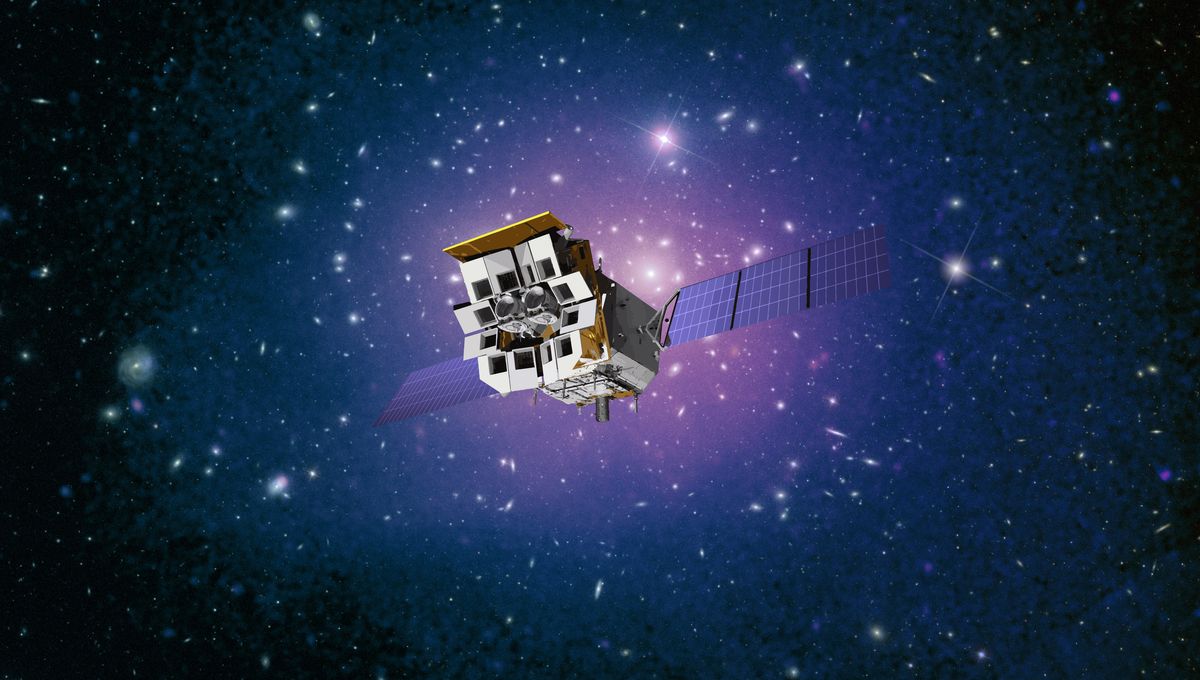
Next month, all going well, a Long March rocket will launch a highly innovative X-ray telescope of a kind astronomers have been dreaming of for decades. The joint mission between the Chinese Academy of Sciences and the European Space Agency could overcome obstacles that have hindered X-ray astronomy. Yet the mission is so low-profile it has had almost no publicity, at least in English, until the last few days, and at time of writing there doesn’t even seem to be a Wikipedia article about it.
The atmosphere absorbs high-energy photons, which is fortunate for life but has meant all X-ray astronomy needs to be done from satellites or rockets. That’s not the end of the challenges astronomers have faced in trying to explore this part of the spectrum either. X-ray sources are much more dynamic than those of visible light, or even radio waves. Consequently, it’s important to be looking in the right place at the right time.
That requires either having a lot of telescopes pointing at a variety of objects, waiting for them to do something, or one instrument with a very wide-angle view of the sky. Inspired by the enormous field of view captured by lobsters’ eyes, physicists proposed a mechanism more than 30 years ago to scan enormous areas, which was swiftly welcomed, but has taken longer to implement.
Co-inventor of the idea, Professor Keith Nugent, then of the University of Melbourne told The Age: “The reason it’s got such a high profile is that other X-ray telescopes see a tiny, tiny part of the sky. Although normal telescopes see a small part of the sky, X-ray telescopes see an even smaller part.” Nugent’s idea was to use many cube corners, like the roadside reflectors that always bounce light back to the source, but to remove one face. In combination, these send light from vast areas of the sky onto a focal point. The image quality is poor, but sufficient to tell where something exciting is happening so other instruments know where to look.
The first lobster-eye X-ray satellite was launched in 2020 but the Lobster-Eye X-ray Satellite was more of a proof-of-concept than an instrument capable of major research.
Next year, however, should see a giant leap for lobsters, and those inspired by them. A dual X-ray telescope is to be launched. The Wide-field X-ray Telescope (WXT) component will use Nugent’s lobster eye to scan 3,600 square degrees (10 percent of the sky) at a time, looking for anything dramatic. Over three 96-minute orbits, it will cover almost the entire sky. A more conventional Follow-up X-ray Telescope (FXT) with a 1-degree field of view will investigate whatever seems most promising at the time.
Ground-based observatories will be kept constantly updated, so if the WXT finds anything that looks likely to be interesting at other wavelengths as well, they can join in.
The project is being led by the Chinese Academy of Sciences (CAS), who appear ambivalent about attention on their work outside China. On the one hand, they have named the mission the Einstein Probe. Associating the instrument with the famous physicist seems like a definite PR move. However, other forms of promotion are hard to find, other than one unpublished preprint describing the mission and a minimal-detail mention on the CAS website.
In return for providing some of the hardware and some technical advice, the European Space Agency (ESA) has acquired access to 10 percent of the telescope’s data, and last week they decided to let the world know. Their media release not only reported the mission’s renaming, but revealed it is due to launch in January. Perhaps tactfully, in the light of the numerous delays to JWST and NASA’s own lobster-eye experiment, they didn’t mention this is only a few months behind schedule.
“Thanks to its innovative design, Einstein Probe can monitor large swaths of the sky at a glance,” said ESA’s Eric Kuulkers in the statement. “In this way we can discover many new sources while at the same time study the behavior of X-ray light coming from known celestial objects over long periods.”
It is hoped the Einstein Probe will improve our knowledge of how common black holes are, and the way they feed on matter trapped by their gravity. By capturing X-rays released in the first moments of supernova explosions it may answer many questions about these events that not only produce stellar mass black holes, but seed the universe with elements.
In combination with the LIGO detector network, the Einstein Probe could also help us learn about the events that produce gravitational waves, helping complete some of the most important work of the scientific giant after which it is named.
Source Link: Lobster-Eyed Einstein Probe Will Capture The Whole X-Ray Sky